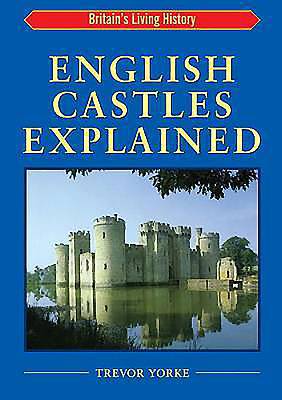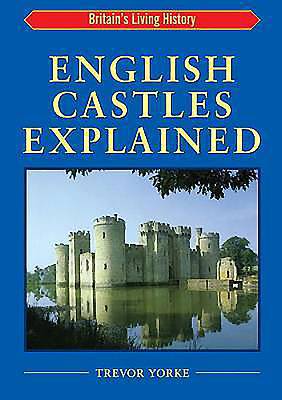
- Afhalen na 1 uur in een winkel met voorraad
- Gratis thuislevering in België vanaf € 30
- Ruim aanbod met 7 miljoen producten
- Afhalen na 1 uur in een winkel met voorraad
- Gratis thuislevering in België vanaf € 30
- Ruim aanbod met 7 miljoen producten
Zoeken
€ 14,95
+ 29 punten
Omschrijving
The English castle evokes thoughts of an age of chivalry, when gallant knights fought and romanced amidst towers, battlements and moats. This image is further enhanced by the dramatic ruins we visit today, with their mysterious passages, spiral staircases and dingy dungeons. Yet, what was the medieval castle really like and what were these features we see today originally designed for? Using his own detailed drawings, diagrams and photographs, author Trevor Yorke explains, in an easy-to-understand manner, how the role of the castle changed from fortress to palatial home and illustrates how the ruined buildings were used in the past. His book is divided into three sections: the first charts the castle's origins and traces its developments; the second looks at the individual parts of a castle from military features such as the portcullis and drawbridge to the domestic quarters, great halls and tournament sites; the third contains a time chart for dating castles, a glossary of unfamiliar terms and a list of castles to visit.
Specificaties
Betrokkenen
- Auteur(s):
- Uitgeverij:
Inhoud
- Aantal bladzijden:
- 128
- Taal:
- Engels
- Reeks:
Eigenschappen
- Productcode (EAN):
- 9781853068195
- Verschijningsdatum:
- 1/11/2011
- Uitvoering:
- Paperback
- Formaat:
- Trade paperback (VS)
- Afmetingen:
- 147 mm x 206 mm
- Gewicht:
- 276 g

Alleen bij Standaard Boekhandel
+ 29 punten op je klantenkaart van Standaard Boekhandel
Beoordelingen
We publiceren alleen reviews die voldoen aan de voorwaarden voor reviews. Bekijk onze voorwaarden voor reviews.











